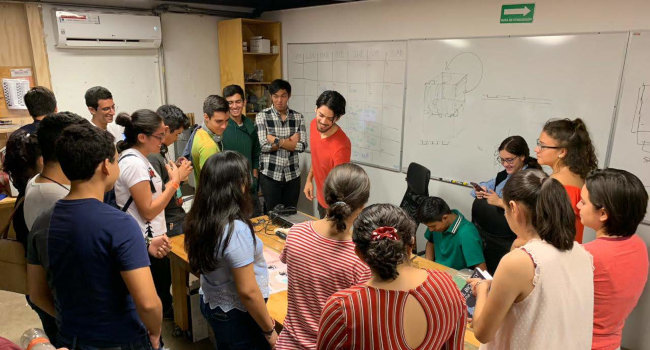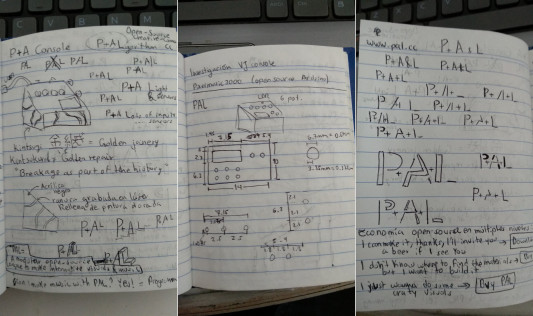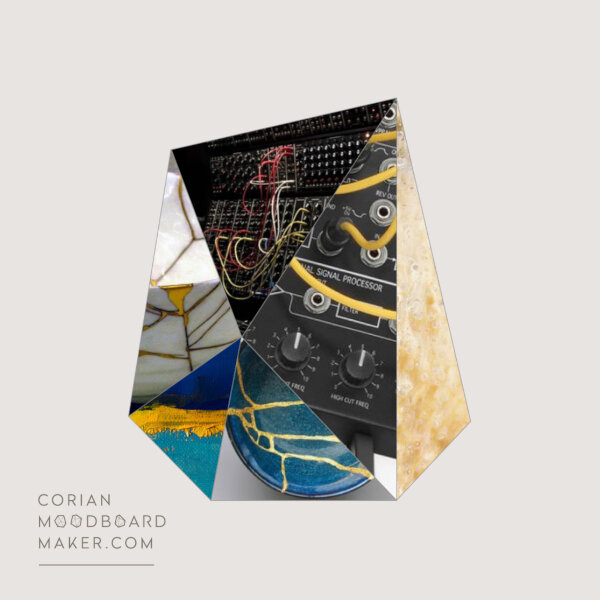"Our technologies have outpaced our ability, as a society, to understand them. Now we need to catch up." - Joi Ito
This week I worked on defining my final project idea and started to getting used to the documentation process. But first, a little bit of context!
Context
Since I was a kid I was attracted to art, science and technology, I just didn't know it was possible to mix these. When I was struggling to choose a career between filmmaking, economics, psychology, and mechatronics engineering, I chose the later, as I was a little more of an introverted inventor. As I discovered the concept of makerspace and that there was a Fab Lab in my city, I went there without a doubt, not knowing what will happen, but sure that there I would find something amazing. I begin working there a few months later and, although it's been very intensive, I feel is kind of like a dream job for me. I discovered that the mix of art+science+tech was possible last year with my first (ever) personal project and prototype: P_A+L! Since then, I have been involved in a number of projects and workshops always seeking the intersection of this three areas.

First Final Project Proposal
At first I wanted to make my final project about an Academy on digital arts, with the structure of the Academany Fab Academy, Bio Academy, Fabricademy, scheduling each week for a different tool like VR/AR/MR, videomapping, kinetic sculptures and others.
I asked Neil about this during the first lecture, and he told me to make a proposal, keeping in mind that making an Academany is not only the schedule and the subjects, but the infraestructure, the people, how to grade assignments.

Second Final Project Proposal
So I figured it would be pretty big for a Fab Academy project, so what I will do is make an improvement on a project I have called P_A+L! (Processing _ Arduino + Lots of sensors!). It is a console for controlling visuals on live performances. Right now it only has a few potentiometers, has an Arduino inside and a protoboard. Through the FabAcademy I will design and manufacture a working PCB, and design and prototype a few controls aside of the potentiometers.
P_A+L!
Processing_Arduino+Lots of sensors! is the first projects in regards of my passion on Art, Science and Technology that I made. The idea is to enhance live-performance visuals using a physical object. This is going to be the base to develop my FabAcadeny final project.
Inspirations && Aspirations
Author & Punisher - Tristan Shone makes his own instruments to play extreme music. What I like about this project and find inspiring for mine is that sense of realness that has on his machines. The instruments are made of metal, and are really heavy, and that changes the whole experience of
Explaining DIY Controllers - In this video, Tristan shows how the instruments work, using digital interfaces.
Ideas && sketches
I made a few sketches of how the console would look like:

I want the project to be sorrounded by this two ideas and concepts, both in aesthetics and in functionality:
Kintsugi, the Japanese art of repairing broken pottery with gold. I like the aesthetics and the philosophy behind this.
Analog synthesizers, that uses analog circuits and analog signals to generate sound electronically.
I made this moodboard to illustrate better this ideas:

I think these two concepts have some ideas that can help me through my journey developing the final project. Here I make a list of a few concepts/ideas that come to my mind while thinking about Kintsugi and Analog synthesizers. These have no particular order, it's just a brainstorm of ideas:
Modularity
Patches
Resilience
Philosophy of living
Repairing
Connecting
Devices with a meaning
Organic
Conclusions
So what I want to design and fabricate for my final project, is a device, that artists and perfomers can connect different input and output devices, to enhance visuals on live-performances and artistic installations. This devices will provide the artis/performer to make more organic shows/installations. Instead of being attach to a computer, it could manipulate different modules to create different environments. The design of the device is fully inspired by the japanese technique and philosophy of Kintsugi, and the functionality and modularity of the classic analog synthesizers.